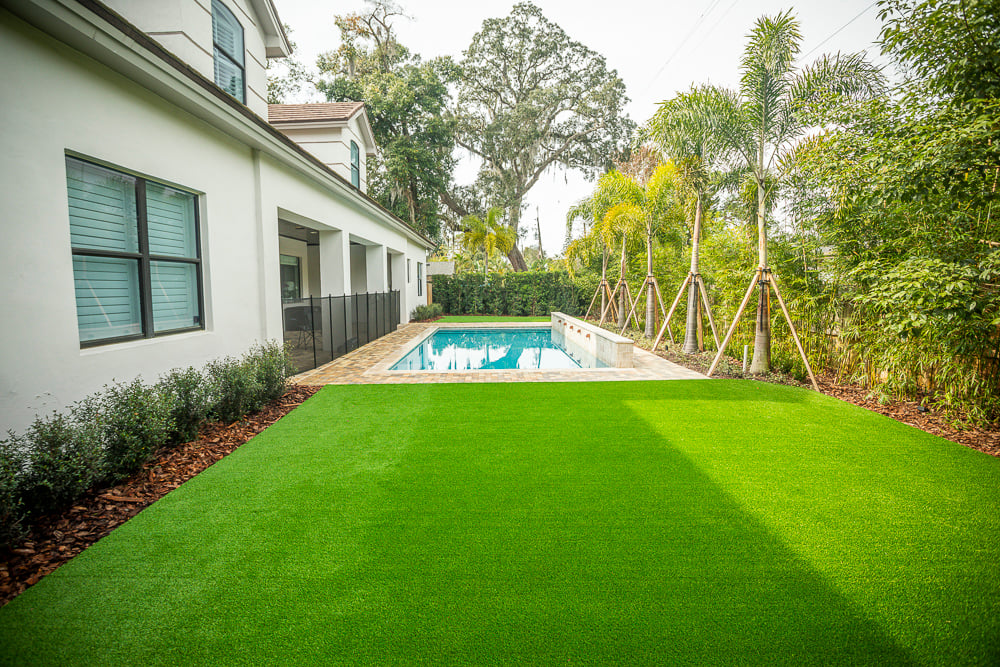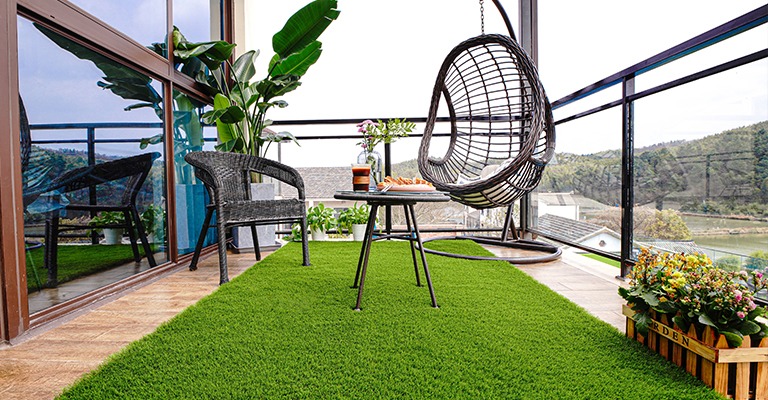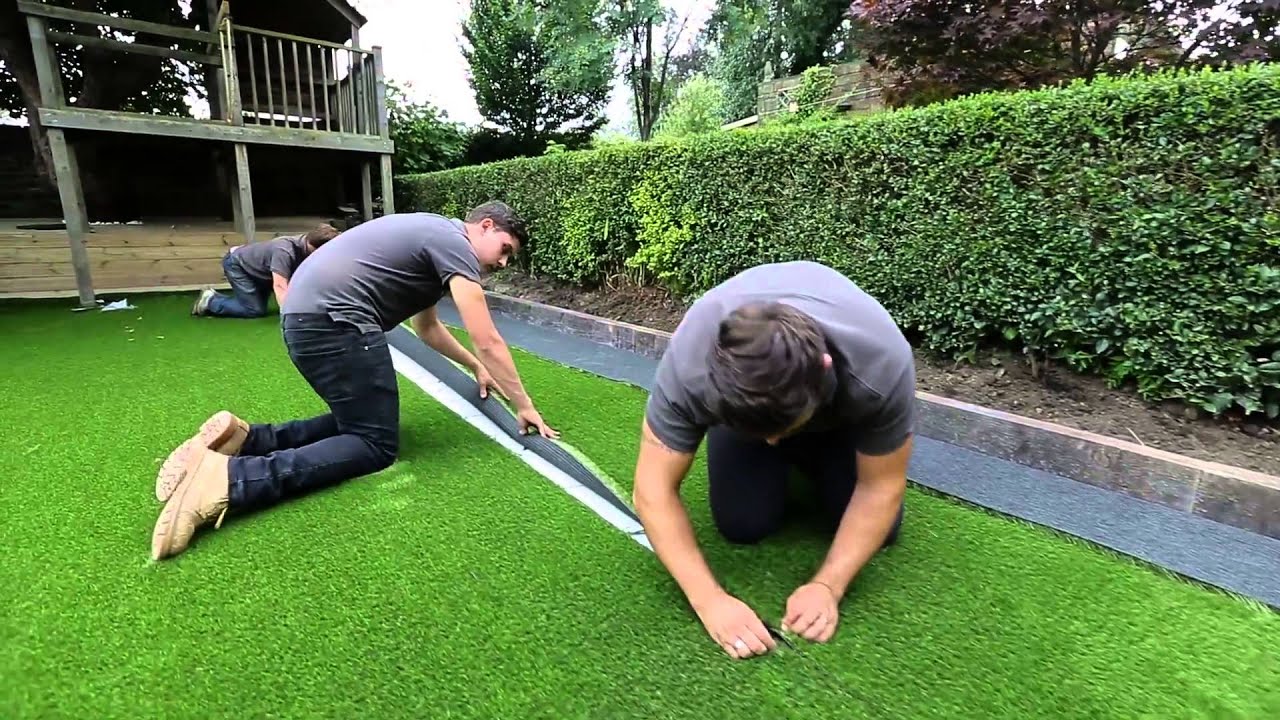Explore the Environmental Benefits of Opting for Artificial Grass Solutions
The adoption of synthetic grass options provides a compelling possibility to resolve pushing environmental difficulties. By substantially minimizing water use and decreasing the application of hazardous chemicals, these options not just advertise sustainable landscaping but also shield regional communities.
Water Conservation Perks
One of the most significant advantages of artificial grass is its capability to preserve water. In comparison, fabricated turf does not require watering, dramatically reducing the general demand for water sources.
By getting rid of the requirement for normal watering, fabricated lawn adds to sustainable landscape methods and assists minimize the environmental effect of extreme water consumption. Moreover, the preservation of water includes the reduction of runoff, which can result in soil erosion and river air pollution.
Additionally, the setup of synthetic grass allows communities and property owners to designate water sources more successfully, concentrating on crucial usages such as alcohol consumption water and agriculture. The shift in the direction of fabricated grass not just promotes accountable water usage however likewise lines up with more comprehensive environmental goals intended at preserving all-natural sources.
As communities increasingly prioritize sustainability, the water conservation benefits of synthetic grass provide a compelling situation for its fostering in business and residential landscaping jobs.
Lowered Chemical Usage
The transition to synthetic lawn substantially decreases the reliance on chemical treatments generally made use of in all-natural grass upkeep. Typical grass management typically includes the application of pesticides, plant foods, and herbicides to advertise growth and control parasites. These chemicals can pose threats to human wellness, local wildlife, and the atmosphere, adding to dirt and water contamination.
On the other hand, synthetic grass gets rid of the demand for these damaging compounds. When set up, it requires minimal upkeep, largely including regular cleansing and irregular infill replenishment. This reduction in chemical usage not only profits the immediate environment however likewise adds to broader environmental security. By reducing the release of synthetic substances right into the ecological community, synthetic grass advertises healthier soil and water systems.
Additionally, the lack of chemical overflow connected with synthetic grass installations assists shield local rivers from air pollution, sustaining marine life and keeping biodiversity. Turf installation phoenix az. As areas significantly prioritize sustainable methods, choosing artificial lawn offers a practical service that straightens with ecological conservation goals. With this shift, homeowner can take pleasure in lavish eco-friendly areas without jeopardizing environmental health, paving the method for a much more lasting future
Reduced Carbon Impact

Furthermore, the setup of artificial grass can result in considerable water preservation. All-natural lawns call for substantial amounts of water for watering, which not only includes in the carbon footprint related to water extraction and treatment however additionally stress regional water resources. On the other hand, fabricated lawn requires marginal upkeep, needing no go to this web-site watering, thereby substantially minimizing water use and its associated energy prices.
Furthermore, the durability of synthetic grass adds to its decreased carbon effect. With a life expectancy of as much as 15 years or more, the demand for regular replacements is reduced, leading to less waste and lower power usage in production and disposing of traditional yard options. On the whole, man-made turf presents a lasting alternative for environmentally aware landscape design.
Habitat Conservation
Environment conservation is an essential consideration in the discussion over landscaping choices, especially when comparing synthetic grass to all-natural grass. All-natural lawn lawns usually need substantial maintenance, including making use of chemicals, plant foods, and herbicides, which can detrimentally affect local ecosystems. These chemicals can seep into the dirt and rivers, damaging native plants and fauna and interrupting local environments.
Artificial lawn gets rid of the need for dangerous chemicals, consequently securing nearby wildlife and keeping the stability of surrounding communities. The setup of man-made grass can lead to the conversion of former grass locations into even more biodiverse landscapes, such as pollinator gardens or indigenous plant locations, which can support neighborhood wildlife.
Ultimately, the transition to synthetic grass not just saves water and decreases maintenance initiatives yet also fosters an extra harmonious partnership between human tasks and the natural surroundings, advertising habitat preservation in the process.
Long-Term Sustainability
Long-lasting sustainability is an essential click to read consider evaluating the advantages of artificial lawn over standard yard lawns. Among the most considerable benefits of man-made grass is its durability; it can last up to 15-20 years with minimal maintenance, whereas natural turf requires regular reseeding and substitute. This longevity minimizes the demand for constant resources, such as water, fertilizers, and pesticides, which are necessary for maintaining a healthy and balanced turf lawn.
Furthermore, artificial grass adds to a decrease in carbon discharges connected with yard care tools. Standard grass commonly require gas-powered lawn mowers, trimmers, and blowers, all of which add to air pollution. Phoenix turf companies. In comparison, fabricated grass gets rid of the demand for such tools, promoting a cleaner setting
Moreover, the production of synthetic grass increasingly makes use of recycled materials, improving its sustainability profile. As suppliers adopt environment-friendly techniques, the environmental footprint of man-made grass proceeds to lessen.

Final Thought
The fostering of fabricated turf options provides considerable environmental advantages, consisting of considerable water conservation, lowered reliance on damaging chemicals, and a lower carbon impact. In addition, synthetic grass aids in maintaining natural habitats by lessening land disturbance and advertising lasting sustainability via making use of resilient products. Collectively, these factors emphasize the capacity of artificial turf to add favorably to ecological wellness and use a sensible alternative to typical landscaping methods in a progressively resource-conscious world.
In contrast, artificial lawn does not need watering, substantially minimizing the overall need for water sources. By minimizing the release of synthetic compounds into the ecological community, man-made grass advertises healthier dirt and water systems.
Additionally, the setup of man-made turf can result in considerable water conservation. In comparison, artificial lawn needs marginal maintenance, calling for no watering, consequently dramatically reducing water usage and its associated power expenses.
